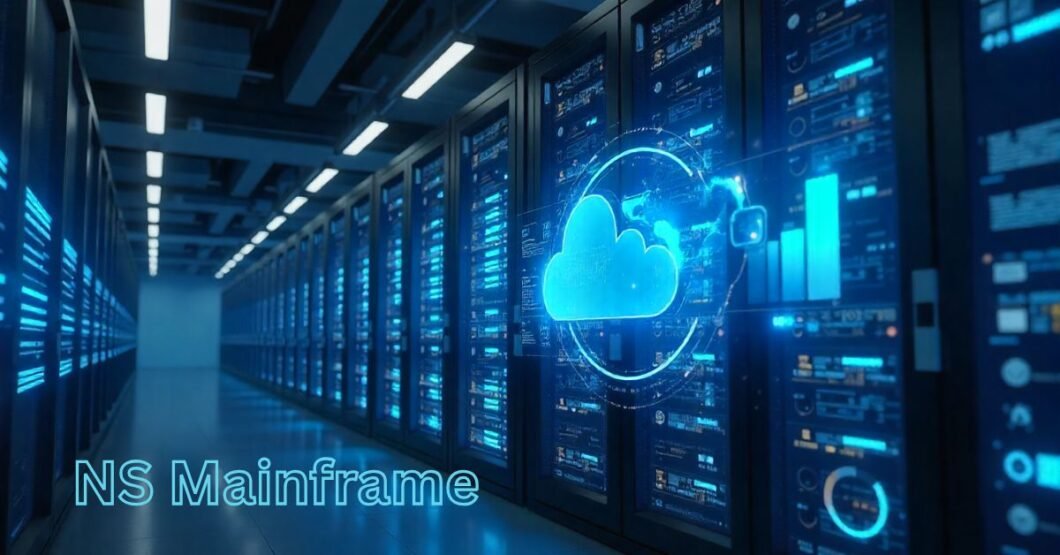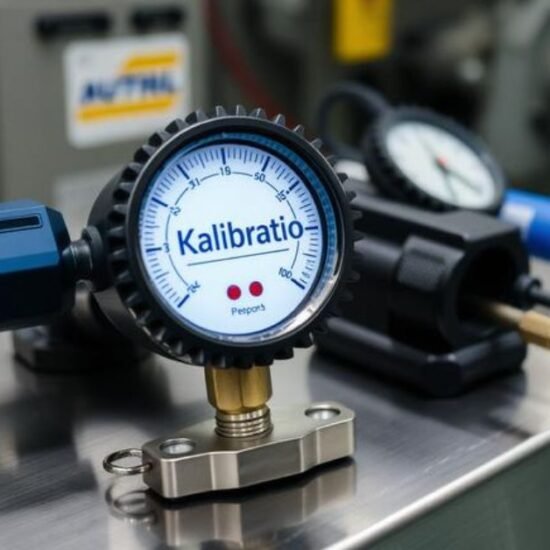Introduction
It’s a popular misperception that mainframes are obsolete in a time when cloud-native apps, containerized workloads, and big data analytics rule the day. But the reality is radically different. For numerous Fortune 500 businesses, financial institutions, and governmental organizations worldwide, the NS Mainframe continues to be an essential part of their operations.
The term “NS Mainframe” describes a family of mainframe computing systems utilized for systems integration, data reliability, and large-scale transaction processing. These devices are designed to manage extremely secure, high-throughput, and high-availability enterprise applications. NS Mainframes are the unsung heroes of enterprise IT, handling billions of banking transactions every day and managing international logistics in real time.
This essay delves further into the definition of NS Mainframe, its operation, and the reasons it remains indispensable in high-demand settings, even in 2025 and 2030. This guide will provide you with important insights into the future-ready role of mainframes in contemporary IT, regardless of your background as an IT leader, corporate architect, or tech enthusiast.
What Is the NS Mainframe? A Modern Mainframe Defined
A high-performance centralized computing system designed to process massive amounts of data transactions with little latency is called an NS Mainframe. It places a higher priority on performance at scale, availability, serviceability (RAS), and reliability than general-purpose servers.
Important Features:
- Massive Throughput: Thousands of transactions are processed per second with a massive throughput.
- Bulletproof Security: Uses military-grade encryption to handle sensitive data.
- Architecture That Is Fault-Tolerant: Frequently, systems operate with 99.999% availability.
- Ready for Virtualization: Logical partitions (z/VM, LPARs) are supported.
NS Use cases for mainframes:
- Financial clearinghouses and banking systems
- Platforms for booking flights
- Backend systems for insurance
- Data centers for the government
NS Mainframes are changing, merging with cloud platforms, AI systems, and APIs to remain future-proof, despite what many people think.
Why Enterprises Still Trust NS Mainframe Systems
Many large enterprises still use mainframes because of their distinct operational advantages, even in the face of the growth of distributed computing and the cloud.
Causes Companies Rely on NS Mainframes:
- Unrivaled Uptime: For decades, no other platform has provided performance around the clock.
- Excellent Batch Processing: Effective for Payroll, Billing, and Compliance Verification
- Extreme Scalability: Each server may support up to 10,000 users at once.
- Regulatory Compliance: Designed to be compatible with SOX, GDPR, and HIPAA
- Long-Term Investment: Made for an operating career spanning several decades
Enterprise Use Case:
Enterprise Use Case: Without moving to the cloud, a top-5 U.S. bank handles over 30 billion transactions a year on an NS Mainframe with 99.99% uptime.
Architecture of NS Mainframe: How It Works
Central processors, input/output subsystems, virtualization layers, and secure memory pools form the foundation of the NS Mainframe architecture.
Key elements:
- CPUs and ZIPs (specialized engines) for task offloading
- System partitioning with LPARs
- Integrated I/O channels for quick data transfer between CPUs and storage
- Data protection hardware security modules (HSMs) for operating systems
- Middleware, including Linux ONE, z/OS, and z/VM
Commodity x86 systems cannot match the parallel computing, data integrity, and failover capabilities made possible by these architectural elements.
NS Mainframe vs. Cloud: Complement or Competitor?
In order to understand how NS Mainframes and cloud environments cohabit rather than compete, let’s compare them.
Comparison Table
| Feature | NS Mainframe | Cloud Computing |
| Availability | 99.999% | ~99.9% |
| Security | Hardware-embedded | Software/cloud-based |
| Data Processing | Batch & transactional | Distributed + parallel |
| Cost Efficiency | High upfront, low TCO | Low upfront, higher variable cost |
| Integration | API/Hybrid ready | Excellent via cloud-native tools |
Conclusion:
Cloud and NS Mainframes are now frequently used in tandem, with mainframe APIs providing secure workloads to cloud analytics tools rather than replacing mainframes.
Modern Programming Languages Supported by NS Mainframe
It is necessary to debunk the misconception that mainframes solely execute COBOL.
Supported languages
- Include COBOL and PL/I, which are still widely used in financial systems.
- Python and Java are supported by Unix System Services (USS).
- Go, Node.js, C/C++ ,
- REXX scripting in containerized environments
Developer Tip
Modernization is made easier by IBM Z and NS Mainframes’ growing support for DevOps tools, Git, and VS Code interfaces.
Use Cases of NS Mainframe in Key Industries
Banking & Financial Services:
- Clearing and settlement in real time
- Safekeeping of the ledger
- Large-scale transaction records
Retail Sector:
- Forecasting inventory
- Integration of POS systems
- Management of loyalty programs
Medical:
- Processing claims
- Safekeeping of patient records
Real-World Example:
Amazon uses a hybrid mainframe and microservices platform to handle warehouse logistics for Prime orders, particularly during busy times.
Security in NS Mainframe Systems
Governments and banks alike trust NS Mainframes because security is integrated directly into the hardware and software stack.
Important Security Elements:
- Resource Access Control Facility, or RACF
- Protocols for multi-layered authentication
- Using HSMs for end-to-end encryption
- Logical blocking, DDoS protections
- Immutable logging and auditing
According to recent surveys, cloud-native apps experience more than 32% of worldwide data breaches, while NS mainframes experience less than 0.1%.
Integration of NS Mainframe with Modern DevOps Pipelines
Agility is required by contemporary IT workflows, and NS Mainframes are meeting these demands.
Tools for Integration:
- RESTful services and z/OSMF APIs
- Compatibility between VS Code and IBM Z Open Editor
- Jenkins and Urban Code Deploy for CI/CD
- Z/OS Connect EE for microservice integration
- Ansible modules for infrastructure scripting
Mainframes are now considered first-class citizens of DevOps because of toolchains that connect “legacy” and “agile.”
Challenges Faced by Organizations Using NS Mainframes
Common Concerns:
- Lack of Talent: Fewer engineers with COBOL training are available.
- Operational Complexity: Needs management expertise
- Perception Misalignment: Considered antiquated
- Expensive initial outlay: The initial outlay of funds can be substantial.
- Gaps in Integration: With more recent SaaS platforms or tools
Potential Remedies:
- Employee upskilling using IBM Z Certifications
- Use hybrid cloud tactics.
- Connect mainframes to front ends based on Docker and Kubernetes.
- Use AI-guided tools to automate maintenance (AIOps).
The Future of the NS Mainframe (2025–2030 and Beyond)
Mainframes are on the verge of becoming popular again.
Trends for the Future:
- AI-powered Mainframes: Automate tuning and forecast workloads
- Modules for Quantum-Safe Cryptography
- Completely Cloud-Native Compatibility: Modernization of APIs first and foremost
- Mainframe Open Source: GitHub workflows, Node.js, and Python
- Focus on Green IT: Redesigns of energy-efficient mainframes
This is developing into an enterprise command center for mission-critical operations that is cloud-friendly and AI-powered.
FAQs
In 2025, will the NS Mainframe still be useful?
Of course. Particularly for government, insurance, and banking systems, it is more interconnected, scalable, and safe than before.
Are contemporary applications compatible with NS Mainframes?
Indeed. Modern DevOps pipelines and microservices are supported by NS Mainframes via Linux ONE, Docker, Java, Python, and APIs.
Does mainframe maintenance cost a lot of money?
The long-term TCO is frequently less than that of continually increasing cloud resources, despite the significant upfront expenditure.
Are cloud platforms compatible with NS Mainframes?
Indeed. These days, AWS, Azure, and Google Cloud frequently use hybrid cloud architectures with mainframes serving as backend processors.
Do cyberattacks pose a threat to mainframe security?
With integrated intrusion detection, access control, and powerful encryption, they are among the most secure platforms in the world.
Conclusion
NS Mainframe technology has not only endured but also flourished in spite of the cloud revolution. Businesses in the digital age rely on its unparalleled speed, security, and reliability to run smoothly, whether they are managing financial ecosystems or spearheading DevOps modernization.
As businesses deal with complicated issues related to data management, compliance, and round-the-clock availability, mainframes offer a tried-and-true, future-proof solution that easily connects with cloud apps, APIs, and contemporary development tools. If your goal is stability and scalability, Mainframe isn’t legacy. It is renowned.
Visit the rest of the site for more interesting and useful articles.




